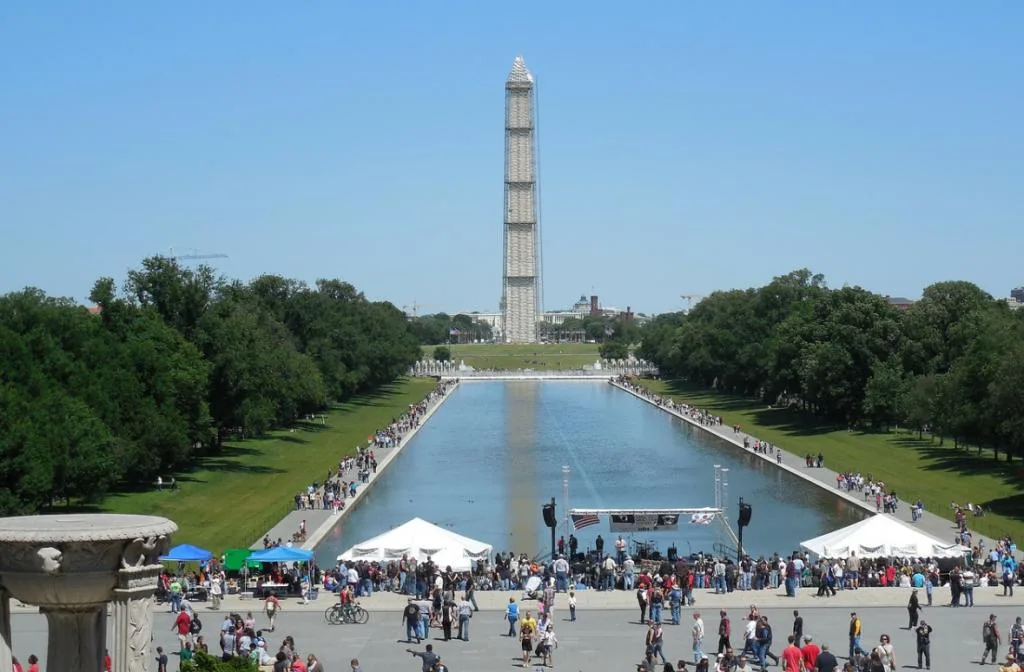It’s one of the most iconic and best-recognized structures in Washington D.C.
In this post, you’ll discover the ultimate list of interesting facts about the Washington Monument.
1. Where is the Washington Monument located?
The monument is located at the center of the National Mall, to the east-southeast of the White House, in a straight line east of the Lincoln Memorial, north of the Jefferson Memorial, and in a straight line west of the Capitol Building.
In that sense, it’s the centerpiece of an area that contains some of the most important and iconic monuments and buildings in the United States.
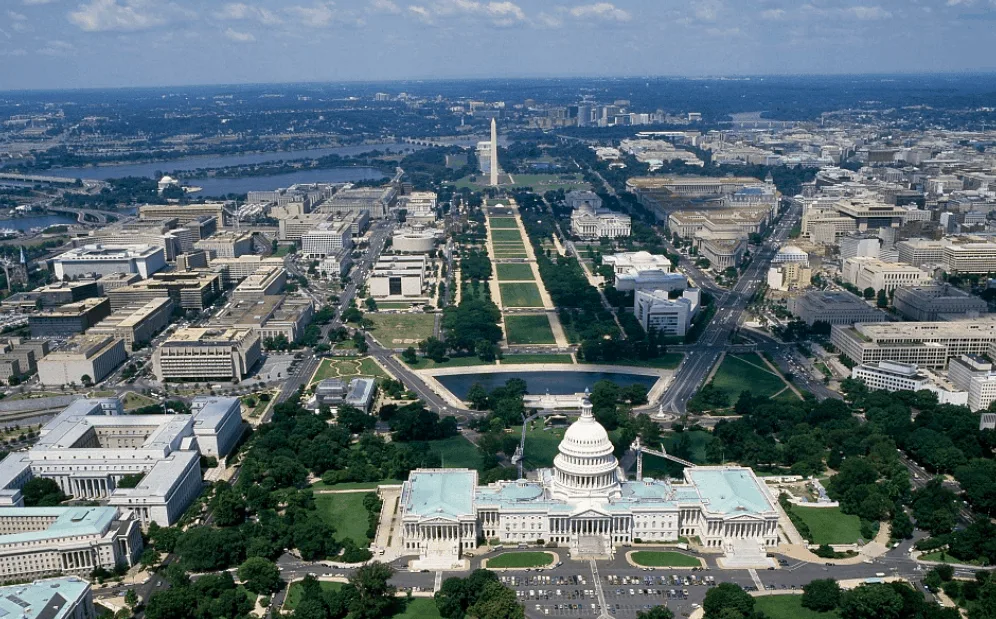
2. It commemorates George Washington
George Washington was one of the most prominent political and military leaders of the United States. One of the “Founding Fathers,” he became the first President of the United States from the year 1789 until 1797.
The monument was constructed in honor of the man who is referred to as “The Father of His Country,” and who was respected by both his friends and foes.
King George III of Great Britain and Ireland, his former enemy, once remarked about Washington that he was “the greatest character of his age,” mainly because he “considered himself to be dispensable.”
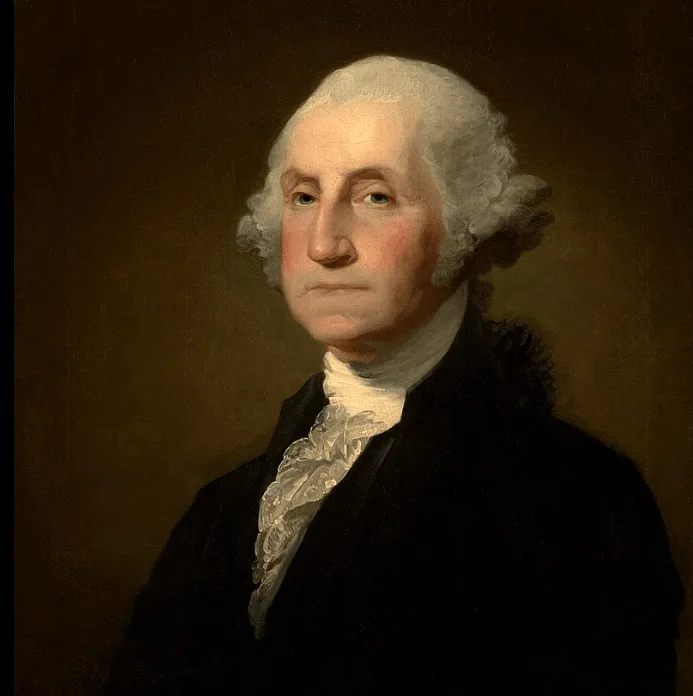
3. The first proposal was made in 1783
One of the most remarkable facts about the Washington Monument is that the first proposal for a monument was already made before George Washington even became the first President of the United States.
Back in 1783, the old Confederation Congress came up with the idea to “erect an equestrian statue of George Washington at the place where the residence of Congress shall be established.”
Two of these equestrian statues would eventually be constructed, one in the Gardens of the National Cathedral, and another, installed on February 22, 1860 (George Washington’s Birthday) in the middle of the Washington Circle.
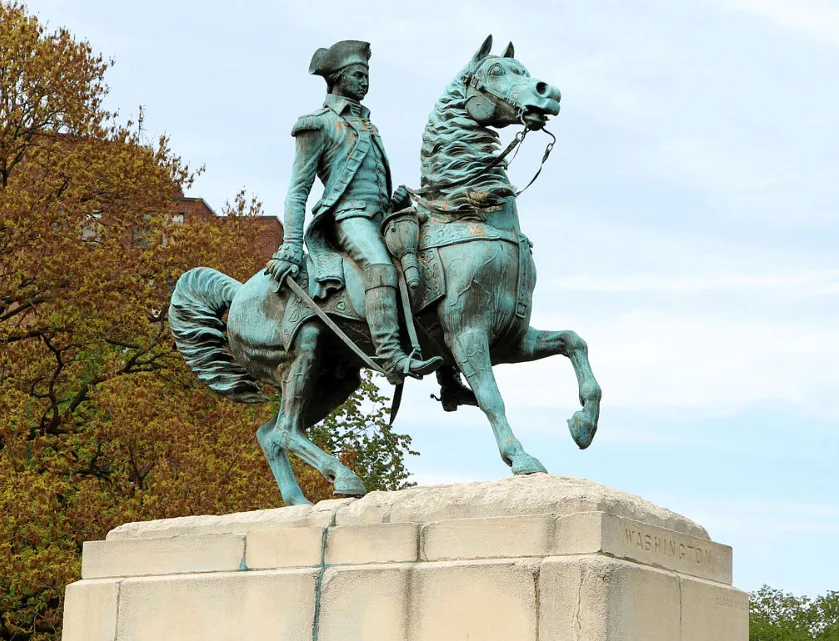
4. The monument was supposed to be an ornamented tomb
The equestrian statues weren’t the only proposed monuments to honor George Washington. On December 24, 1799, which was just 10 days after his death, another type of monument was proposed by the U.S. Congressional committee.
The committee recommended an ornamented tomb to be placed within the United States Capitol. This tomb would have been located directly below the great dome.
This plan was eventually abandoned because there was a lack of funding, disagreement on how the tomb should look like, and most importantly, an unwillingness of Washington’s family to move his body from Mount Vernon, his plantation where he died and already had received a proper burial.
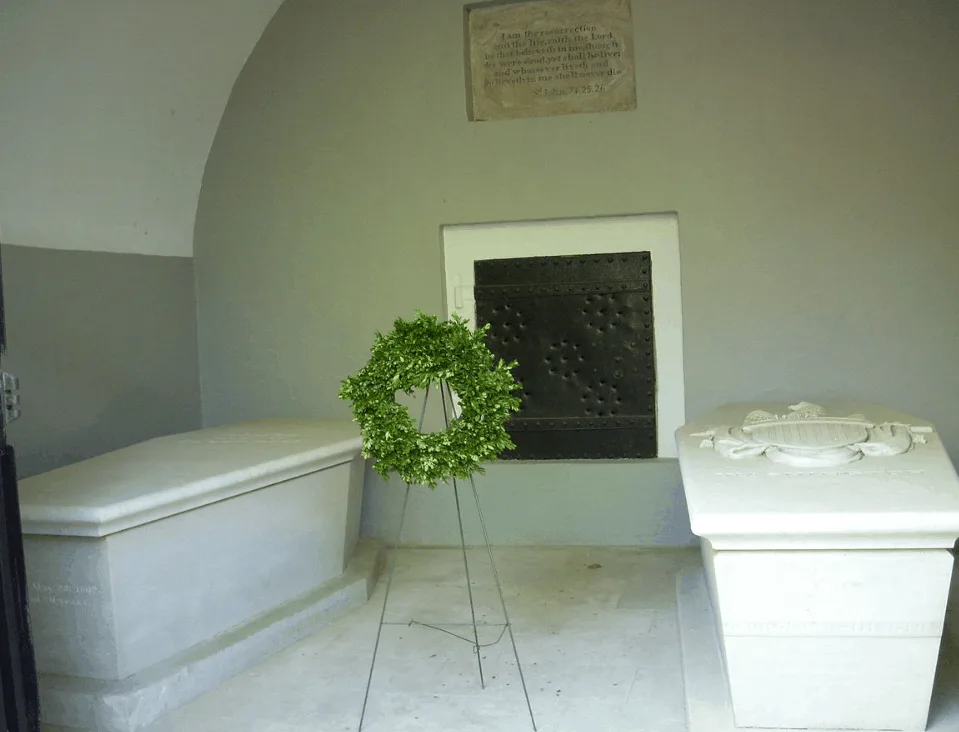
5. Nothing was done until 1833
The initial plans for a monument died after they were proposed for various reasons. It wasn’t until the year 1833 that new progress was being made.
A group of citizens formed the Washington National Monument Society, an organization dedicated to fund and build a monument in honor of George Washington.
In just 3 years, this organization had raised a grand total of $28,000, which is the equivalent of over $1,000,000 today. A plan to create a monument was finally becoming concrete and their mission was clear as well:
It is proposed that the contemplated monument shall be like him in whose honor it is to be constructed, unparalleled in the world, and commensurate with the gratitude, liberality, and patriotism of the people by whom it is to be erected.
The stated goal of the Washington National Monument Society
6. Finding the perfect design took almost 10 years
The winner was picked through a competition that was started in the year 1836 after it became clear how much budget would be available.
Picking the winner wasn’t that easy though because it took the organization almost 10 years to finally decide on the winning design in 1845!
The winning design featured a circular colonnaded building that was 250 feet (76 meters) in diameter with a four-sided obelisk 500 feet (150 meters) high on top of it. The monument was supposed to be 600 feet (180 meters) tall.
On top of the colonnaded building at the base would be a Roman-like Quadriga featuring George Washington.
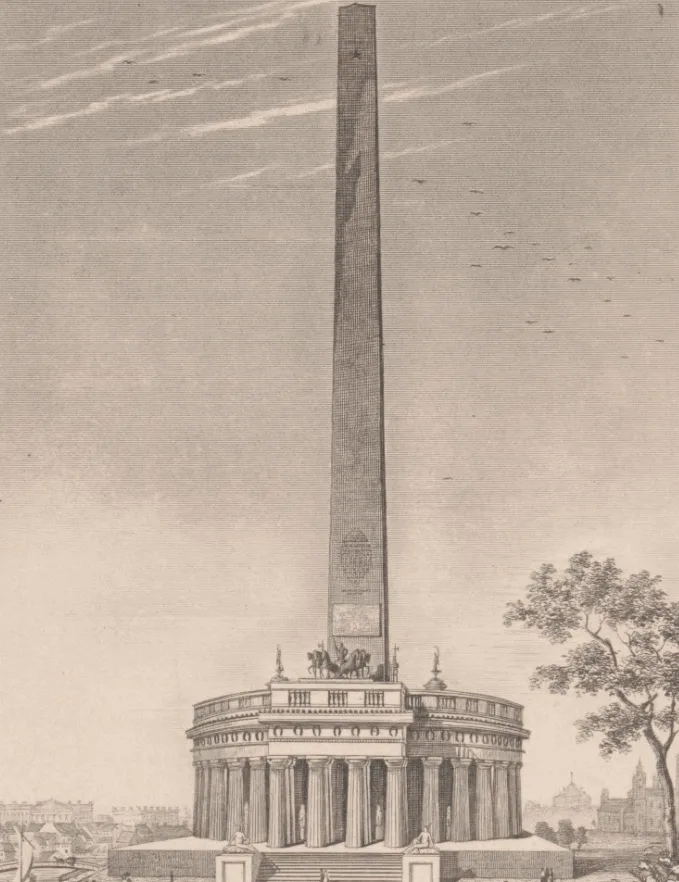
7. The architect had built a monument for Washington earlier
The appointed architect was Robert Mills, who was supposedly the first native-born American to become a professional architect.
This wasn’t the other reason the committee had picked his design though, because he already created a similar-looking monument commemorating George Washington multiple decades earlier, located in Downtown Baltimore in 1814.
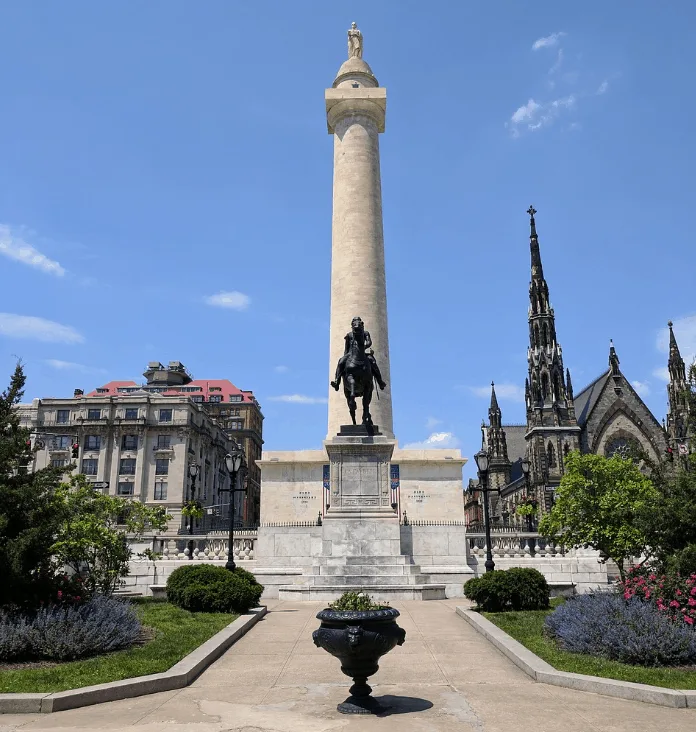
8. The original plan wasn’t followed due to budget constraints
The price tag of the original plan was a whopping $1,000,000, which is the equivalent of over $20 million today! This clearly wasn’t within the budget of the organization managing the project which solely relied upon donations to fund it.
On April 11, 1848, it was decided to radically change Mill’s original design and build a plain obelisk which was to be 500 feet (152.4 meters) tall, 55 feet (17 meters) square at the base and 35 feet (11 meters) square at the top.
Inside of accessing the inside of the obelisk from within the building at the base, two massive doorways were constructed, each 15 feet (4.6 meters) high and 6 feet (1.8 meters) wide.
9. The original location wasn’t suited
The original plan was to build an equestrian statue to commemorate the military leader George Washington, as voted for by the old Confederation Congress in 1883.
So when Pierre Charles L’Enfant created his masterplan for the “city intended to be the permanent seat of government of the United States,” he intended the monument to be built where the direct line to the south of the White House and the direct line to the west of the Capitol meet.
After thorough investigations and testing, it came to light that the surface of this location wasn’t suited for the construction of a massive obelisk, so the location was moved 390 feet (118.9 meters) east-southeast.
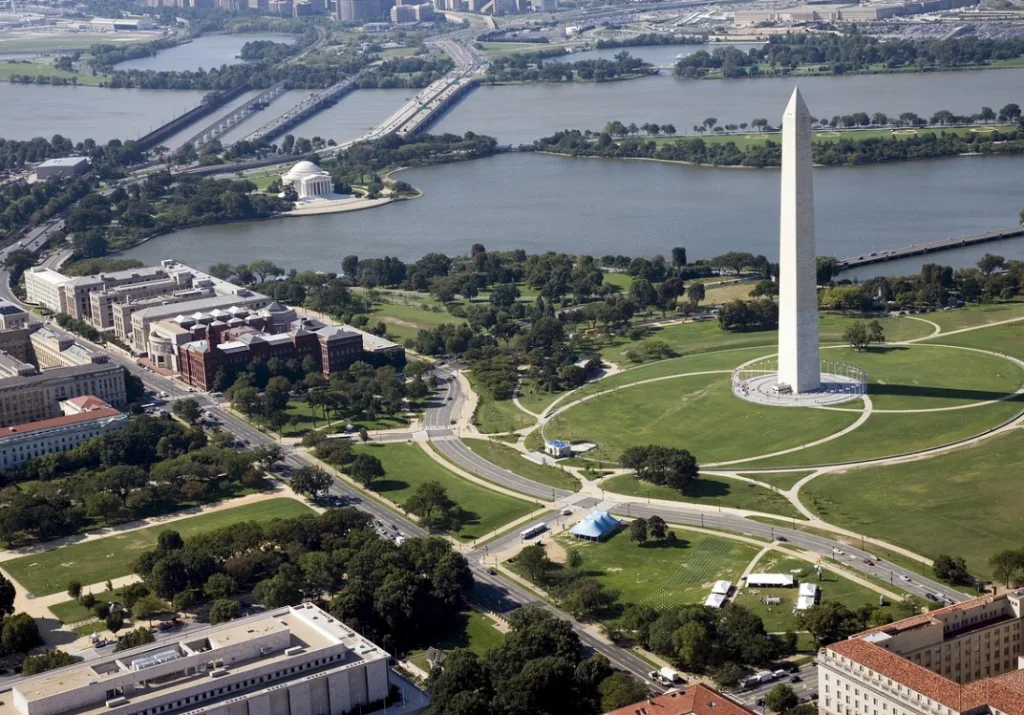
10. There’s a small monument on the original location
At the exact location where the Washington Monument was supposed to be erected, we can now find a monument called the “Jefferson Pier” also referred to as the “Jefferson Stone.”
This monument doesn’t just mark the original location of the George Washington Monument, but also the second prime meridian of the United States, the other ones being through the White House, the Naval Observatory, and the New Naval Observatory.
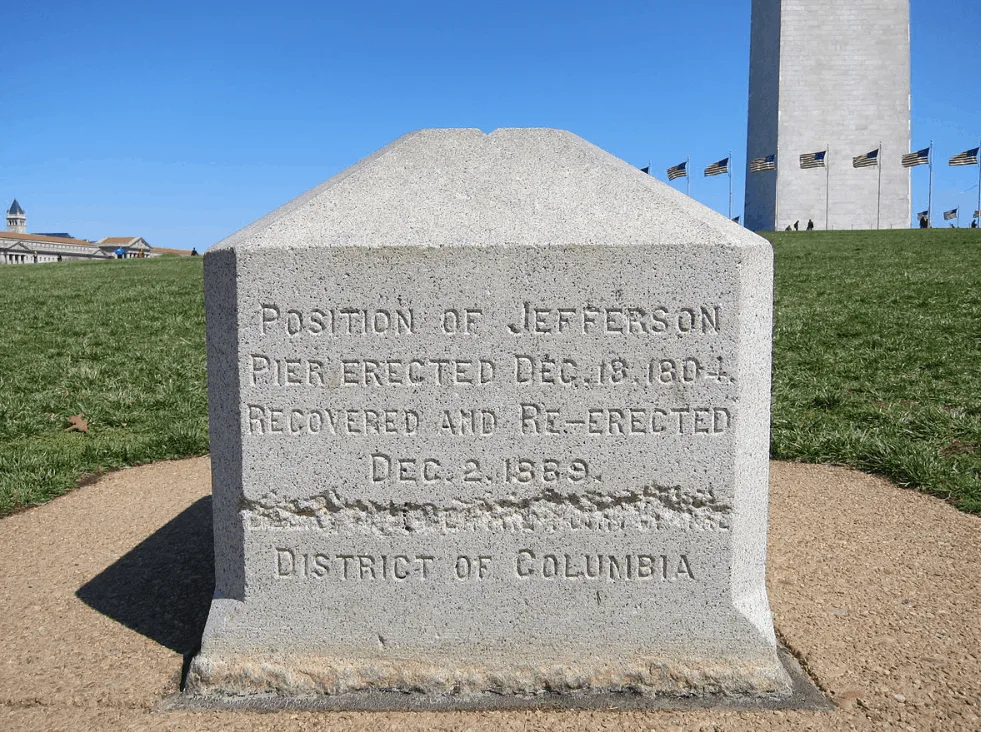
11. It’s final location influenced the McMillan Plan
Because of this change in location, the “McMillan Plan,” the ultimate plan for the National Mall and the surrounding area in Washington D.C., needed to specify the exact location of the Lincoln Memorial.
It was mentioned that the Lincoln Memorial should be “placed on the main axis of the Capitol and the Monument, about 1° south of due west of the Capitol or the monument.”
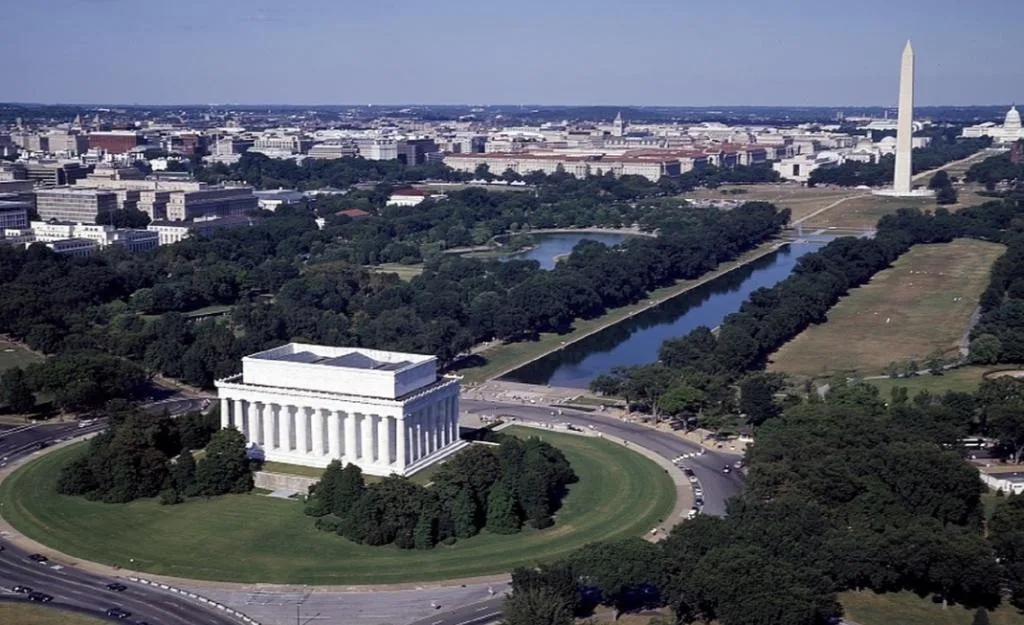
12. Construction of the monument started in 1848
The first stone of the Washington Monument was symbolically placed on Independence Day, July 4, 1848. According to the National Park Service, these words were spoken on that day:
No more Washingtons shall come in our time … But his virtues are stamped on the heart of mankind. He who is great in the battlefield looks upward to the generalship of Washington. He who grows wise in counsel feels that he is imitating Washington. He who can resign power against the wishes of a people, has in his eye the bright example of Washington.
Speech during the laying of the first stone.
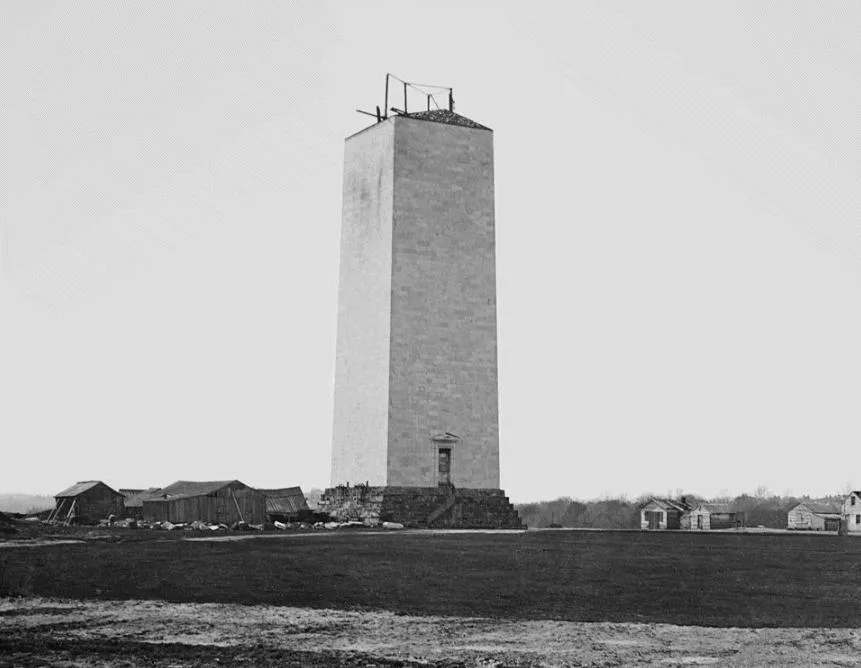
13. The Washington Monument “probably” wasn’t built by slaves
Washington Monument Historian John Steele Gordon assumes that no slaves have been used during the actual construction of the monument. This for the reason that the cutting of stones could only be done by skilled workers.
There were, however, fewer workers mentioned during the first phase of construction (only 57 in 1848) than in later notes (170 during the second phase).
What is certain is that slaves were working in the initial quarry in Maryland from where the stones were imported. During the second phase of construction, slavery was already abolished.
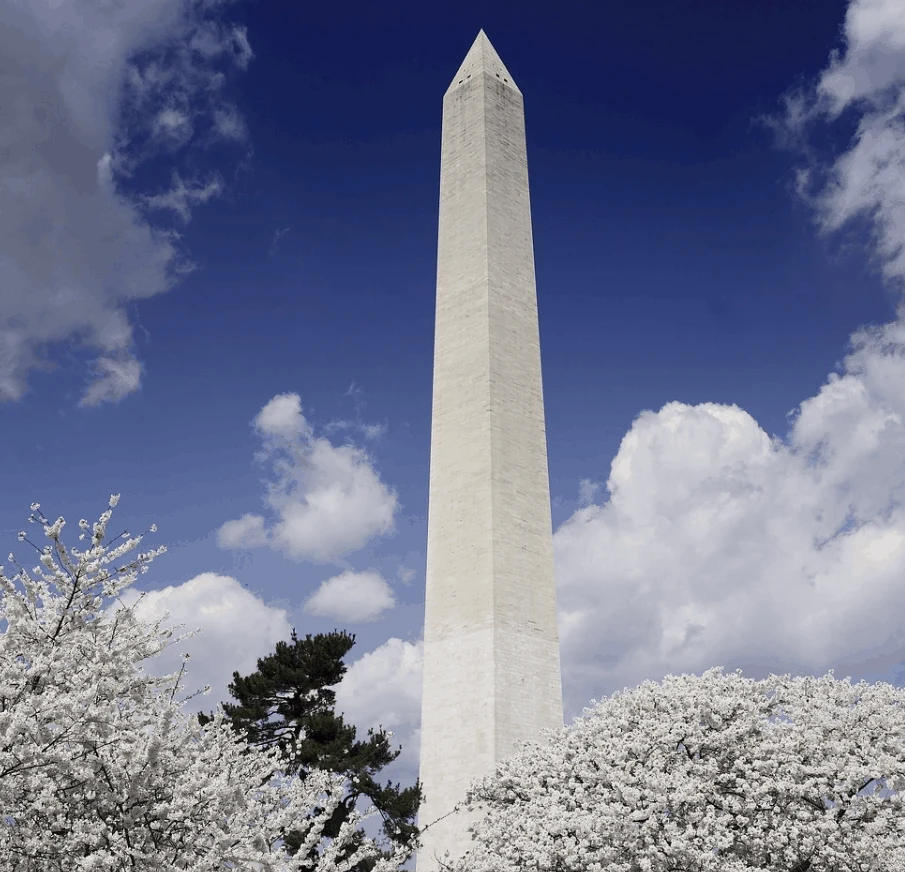
14. The Pope caused the project to be halted
The organization in charge of the project had run out of funds in the year 1854 and was required to come up with a scheme to ensure construction would continue.
Their solution was to allow anybody to donate stones directly to the project, which attracted some very notable donations.
Perhaps one of the most significant was a stone donated by Pope Pius IX, which was referred to as the “Pope’s Stone.“
This didn’t resonate with the anti-Catholic, nativist American Party though, better known by their nickname the “Know-Nothings.”
On March 6, 1854, they broke into to construction site and destroyed the stone, which in return caused public donations to completely run dry.
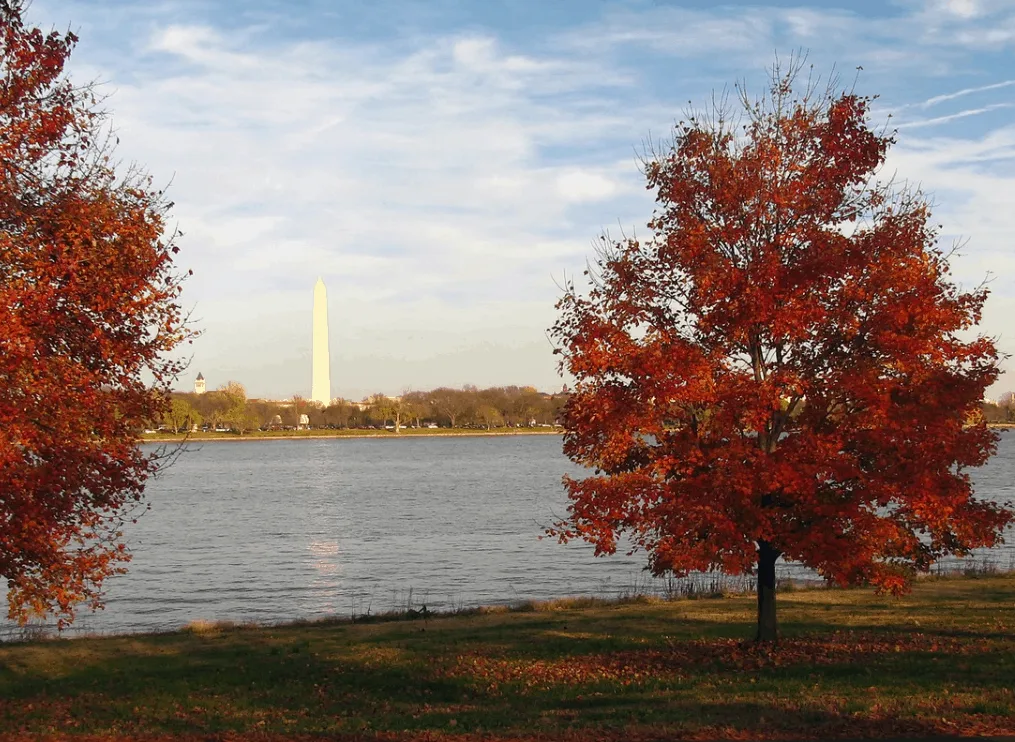
15. Only 4 feet were added from 1855 until the American Civil War
Apart from demolishing the Pope’s Stone, the Know-Nothings also managed to seize control over the organization that managed the project. This happened on February 22, 1855.
Because of this, planned support by Congress to continue the construction was tabled, and the urgently needed $200,000 wasn’t awarded.
The Know-Nothings had no other option than to scramble together rejected stones and were only able to add another 4 feet (1.2 meters) to the monument and they surrendered its possession of the monument to the original Society 3.5 years later on October 20, 1858.
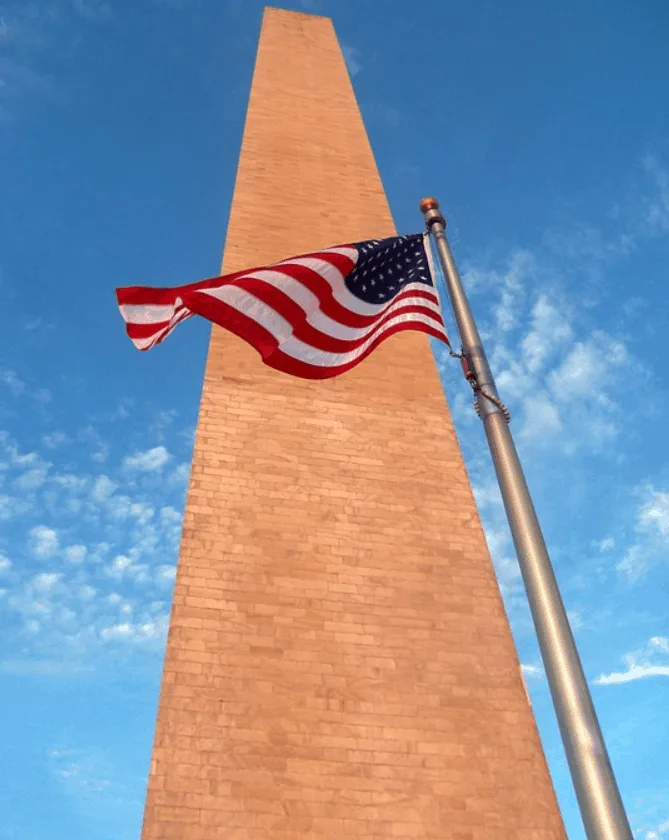
16. The final design was chosen in the 1870s
With the American Civil War coming to a conclusion and half a monument completed, many people wanted the monument to be finished.
In 1876, the American Centennial of the Declaration of Independence, The needed $200,000 to resume construction was finally awarded.
The words of original architect Mills still resonated though, as he is believed to have said that without the colonnaded building at the base, the monument would look like “a stalk of asparagus.”
Five newly proposed designs were considered, and that by William Wetmore Story, an American sculptor, was eventually chosen as the final design. The obelisk was changed to resemble a traditional Egyptian one with a Pyramid-shaped apex.
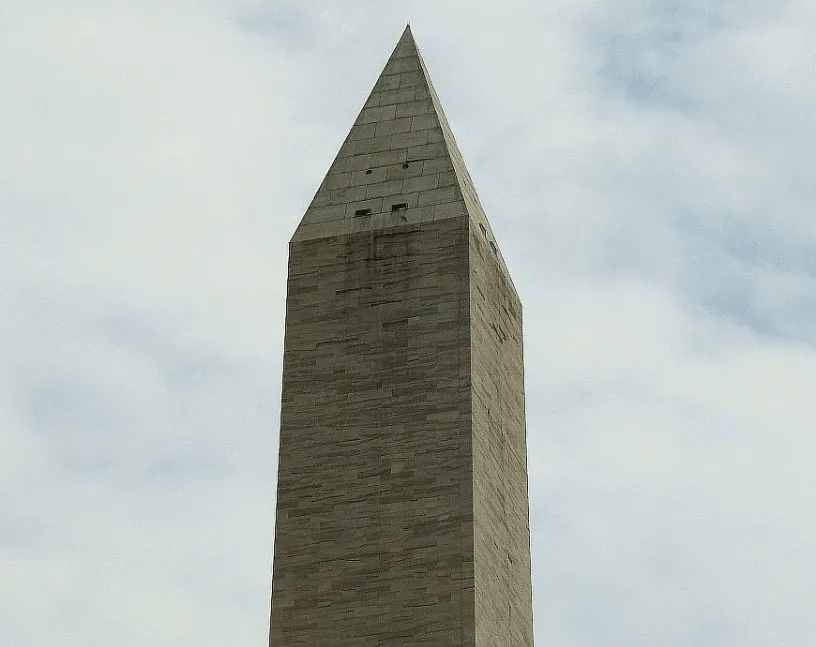
17. Construction only resumed after 23 years
Lieutenant Colonel Thomas Lincoln Casey of the United States Army Corps of Engineers was in charge of the second phase of construction. This resumed in 1879, about 23 years after the previous stone was put into place.
The second phase started with improving the foundation of the obelisk so it could support a 40,000 tonnes heavy monument.
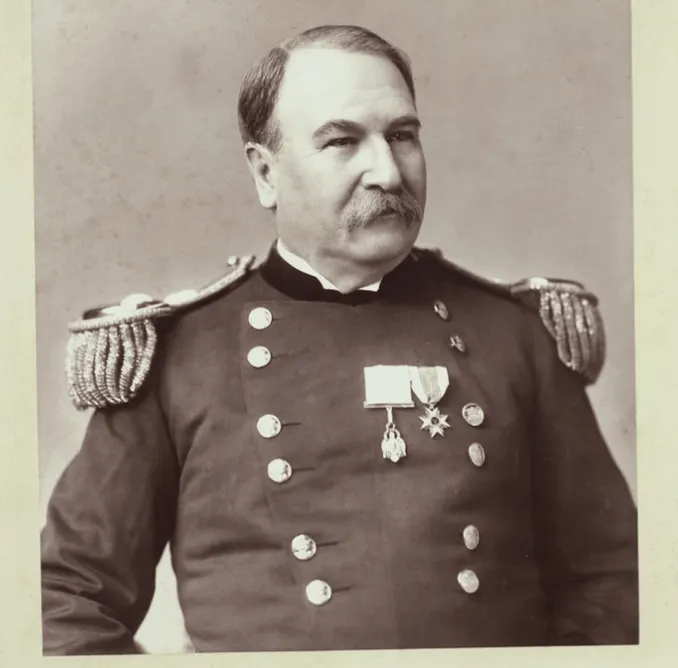
18. The “first stone” was laid in 1880
After a period of over two decades without progress, the first stone was laid as if construction of the monument had just started.
This happened on August 7, 1880, in a ceremony attended by President Rutherford B. Hayes, Thomas Lincoln Casey, and a few others.
One of the most interesting facts about the Washington Monument is that President Hayes put a coin, in which he had carved his initials, in the wet cement at a height of about 150 feet (45 meters).
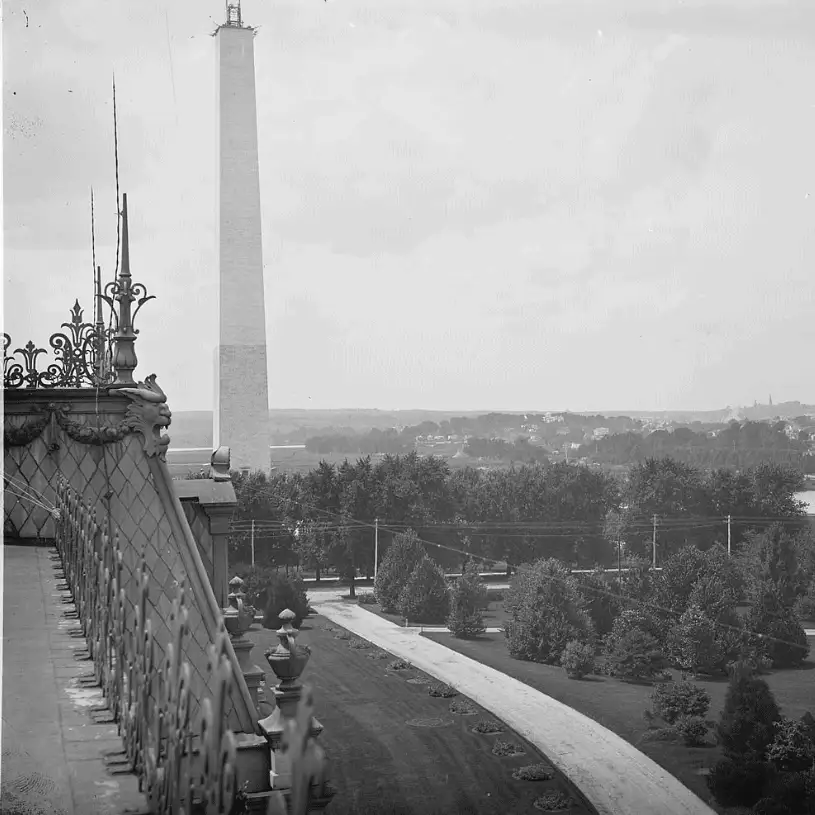
19. The monument is topped with a large piece of aluminium
The progress of construction was relatively fast as the funding to complete the monument was secured. Just 4 years later, the final piece was put into place on December 6, 1884.
One of the more interesting facts about the Washington Monument is that the 100-ounce (2.83 kilos) aluminum apex was the largest-ever solid piece of aluminum ever created at that time.
The price of aluminum at the time was about the same as the price of silver (!), something which obviously changed just 2 years later when the Hall–Héroult process made the creation of aluminum much easier.
It’s fair to conclude that if the monument was being constructed today, aluminum wouldn’t be the first choice of material for the capstone!
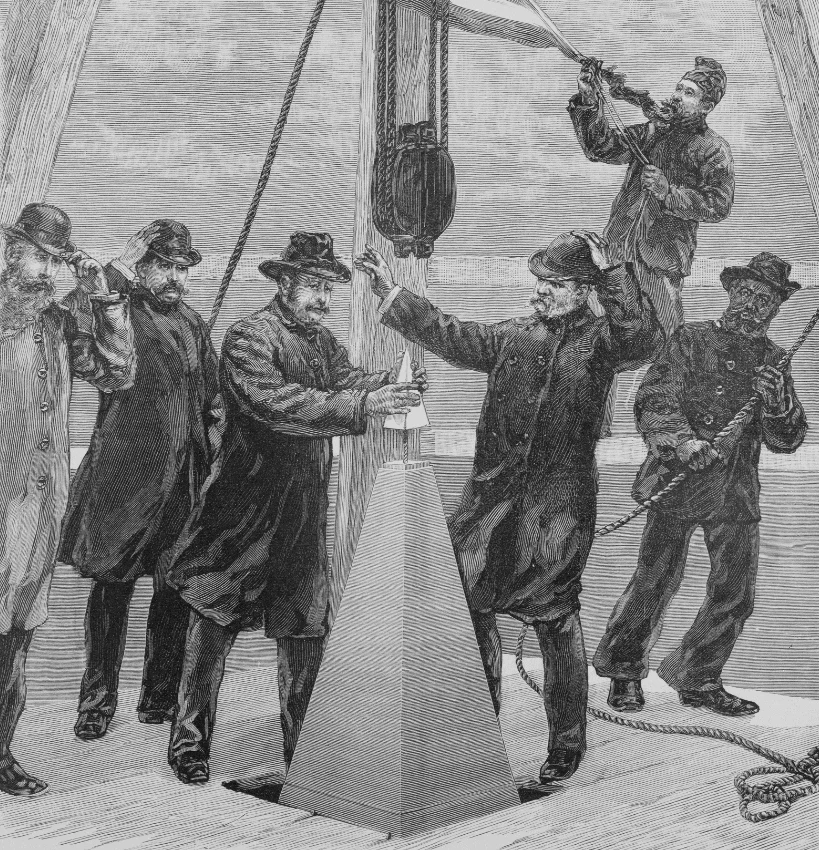
20. The monument was dedicated in 1885
The dedication of the Washington Monument was done by President Chester A. Arthur and was witnessed by around 800 people. This happened on February 21, 1885.
The president dedicated the monument with the words:
I do now …. in behalf of the people, receive this monument …. and declare it dedicated from this time forth to the immortal name and memory of George Washington.
President Arthur’s dedication speech.
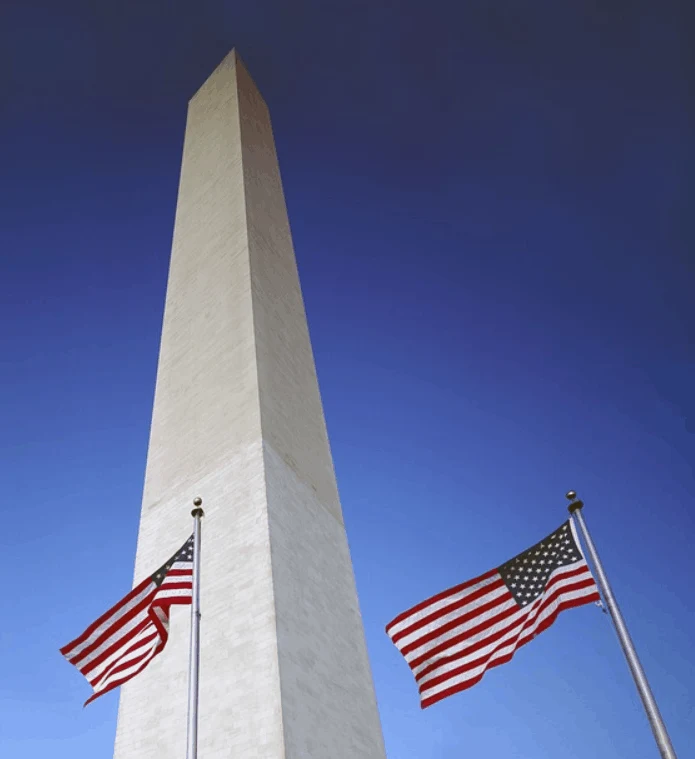
21. It consists of 2 distinguishable colors
During the first phase, the marble stones to build the Washington Monument were imported from a quarry in Maryland. This quarry was closed though when construction resumed during the second phase.
Because Casey had to import stones from another quarry, they had a different color than the original stones, which gives the monument its 2 distinguishable colors, starting at the 150-foot mark (45 meters) where construction was initially halted.
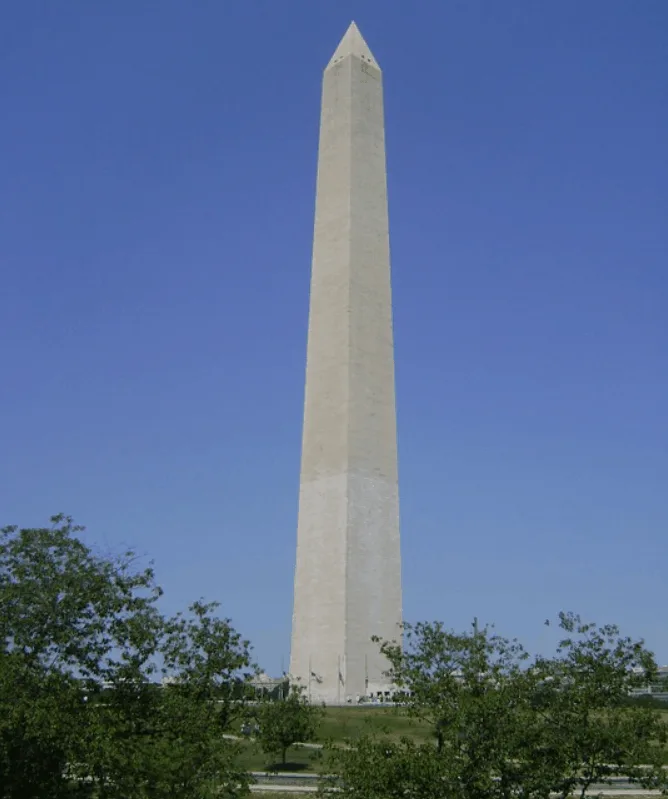
22. It was the tallest building in the world
Upon completion, the Washington Monument was the tallest building in the world after it surpassed the Cologne Cathedral. It has a total height of 555 feet (169 meters).
It held this record for just 4 years when it was surpassed by quite some distance after the Eiffel Tower in Paris was completed in the year 1889.
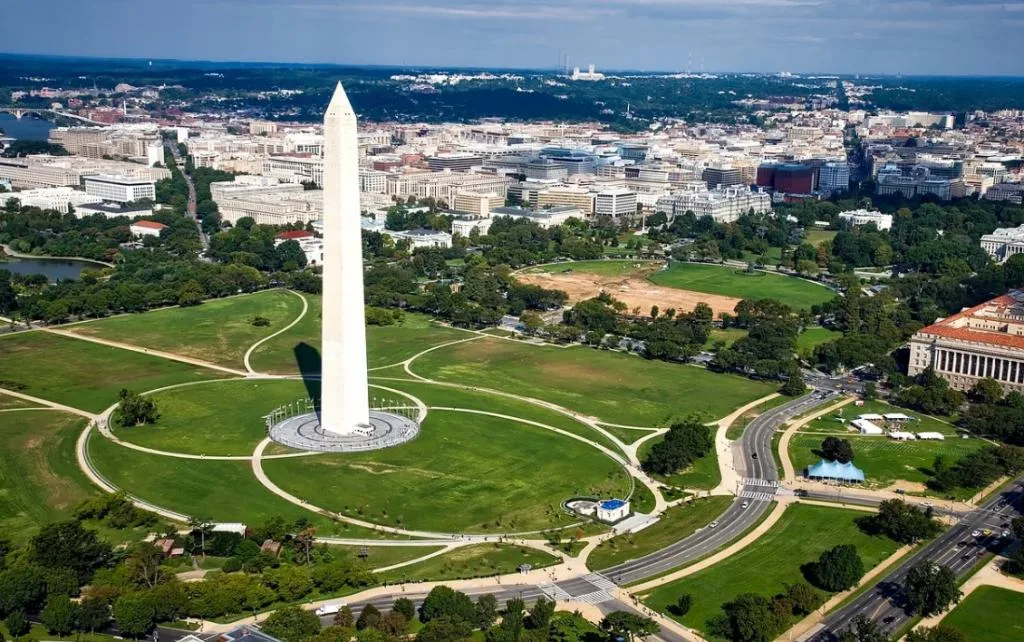
23. No mortar was used to hold the stones together
One of the most fascinating facts about the Washington Monument is that no mortar was used to hold the huge marble blocks together.
This means that the structure is solely relying on friction and gravity to keep the entire structure together!
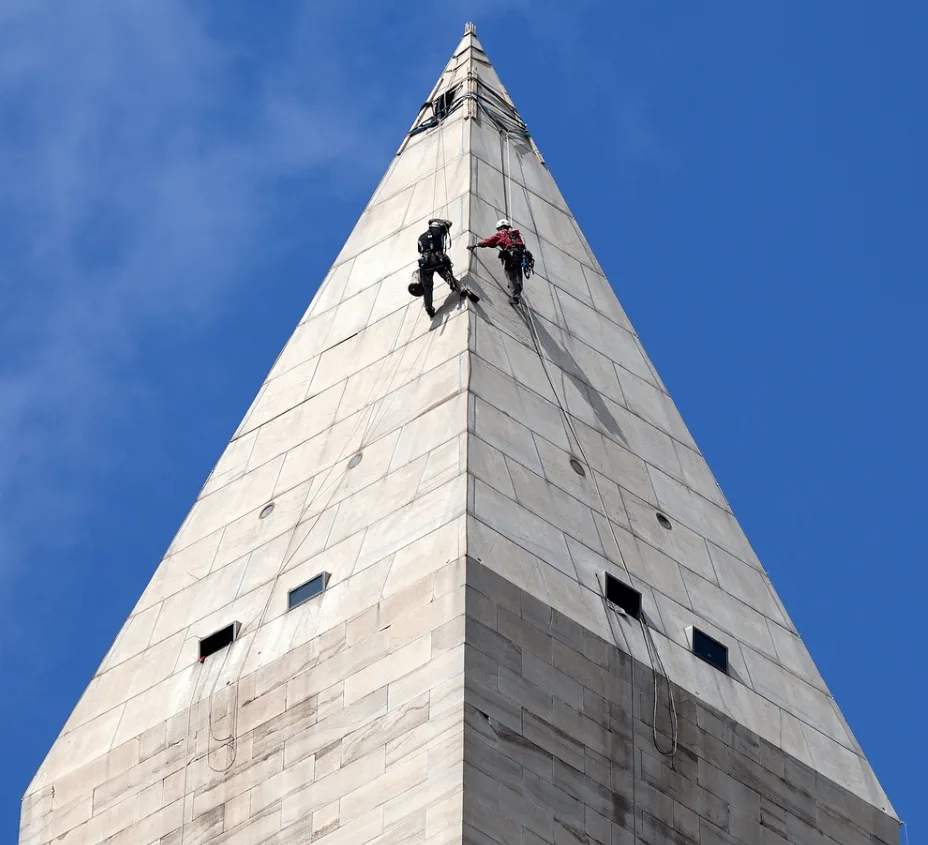
24. The monument survived a strong earthquake
There’s no better way to test the strength of a structure than having it face the conditions that could potentially damage it.
This was the case when a 5.8-magnitude earthquake shook the monument back and forth back in 2011 in an event referred to as the “2011 Virginia Earthquake.“
The Washington Monument still stands strong!
This doesn’t mean, however, that it came out of the earthquake scratch-free because 150 marble blocks were cracked because it and a few blocks inside the building fell down.
Repairs cost a whopping $15,000,000 and the monument opened back to the public on May 12, 2014.
